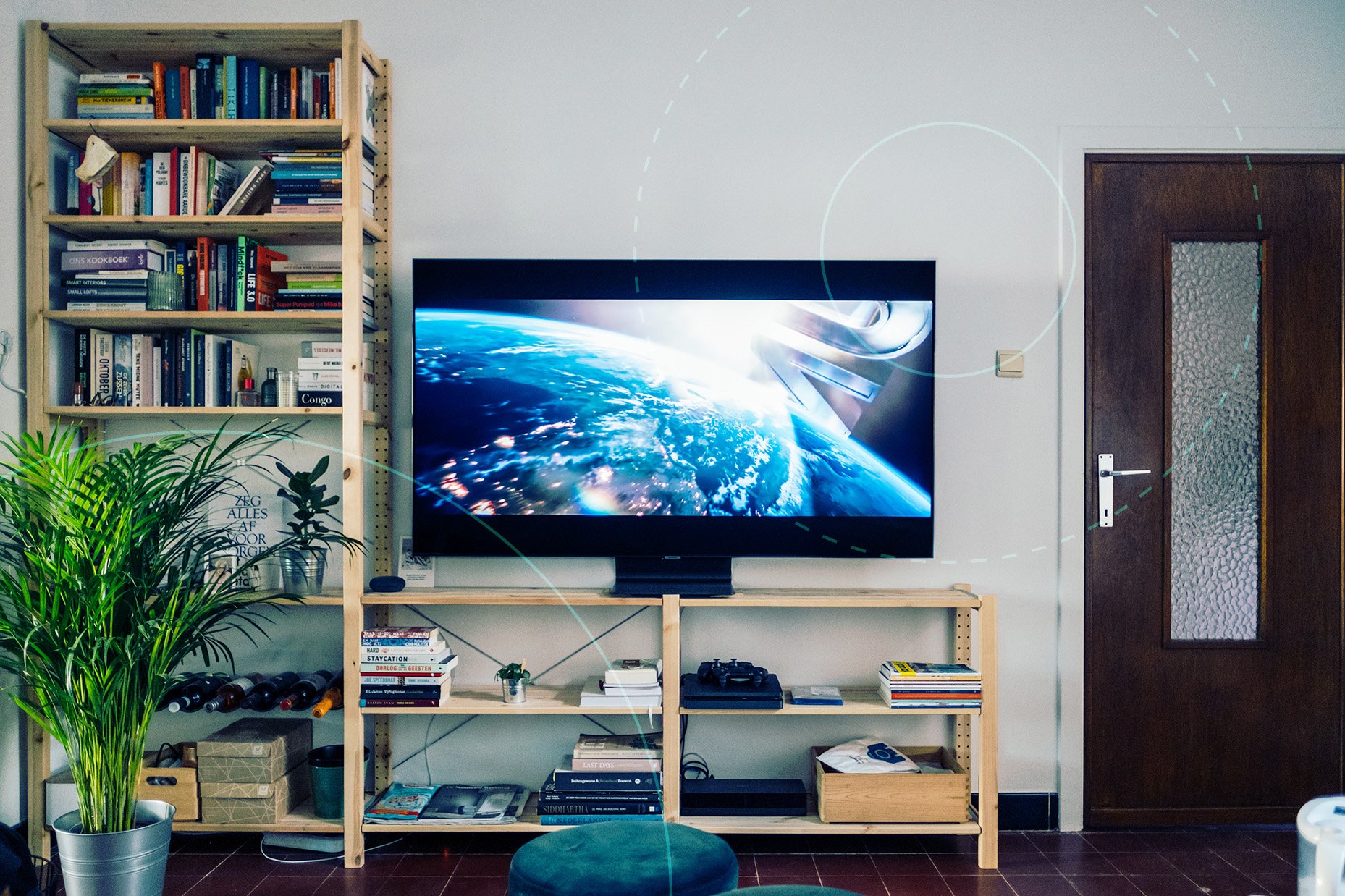Local TV advertising can be a powerful tool for businesses. Learn the ins and outs of this medium with our complete guide, including costs, and more.
Local TV advertising provides better targeting than national campaigns at significantly more affordable rates
Nothing says splashy ad spend like linear TV advertising on the national scale. But while the biggest advertisers drop eye-watering sums on Super Bowl commercials, efficiency-minded marketers are turning to local TV advertising in increasing numbers.
Local TV ad revenue has grown significantly in the last several years to an estimated $165.7 billion in 2023. And for good reason. Local TV advertising costs are often far below those of national advertising even as they incorporate more minute targeting capabilities. But there’s a lot to learn about advertising on local TV to get the most out of your investment.
Check out our comprehensive guide, "Advertising on Television: Everything You Need to Know About the TV Medium" for even more helpful resources.
Pros and Cons of Local TV Advertising
In the world of linear TV, local TV advertising provides valuable middle- and low-spending opportunities for business owners of all sizes. This positioning allows it to provide many advantages.
- Engaging multisensory ads: As with any video-based advertising, local TV advertising provides unparalleled opportunities to tell emotional stories with compelling visuals that build the relationship between viewers and your brand. That’s why 46% of viewers say TV ads are the most memorable of all ads they see.
- Wide local reach: Within the chosen locality, linear TV advertising provides a huge number of ad exposures. Advertising in San Francisco may be expensive, for example, but it’s still more affordable than a national ad while putting your ad in front of millions of viewers and generating more impressions than most other marketing channels.
- Credibility: Advertising on television, especially on established stations, raises the credibility and public esteem of your brand.
- More precise targeting: Using demographic data tied to location and viewership habits, local TV advertising can help your ads appear before viewers more likely to relate and convert.
- More relatable: Knowing your audience better lets you hone your advertising to directly address their needs and wants. Local references and concerns show your brand cares about viewers, drawing them in.
- Affordability: Whereas 30 seconds on a national network can run you six figures, a 30-second slot in a medium-sized local market might have a cost per mille (CPM) of $15-$25.
- Halo effect: Advertising on TV provides a boost to other forms of marketing, such as search engine traffic. People who see an ad on TV are more likely to Google whatever it’s advertising, for example.
Of course, local TV advertising is not without its drawbacks.
- Frequency: TV advertising is most effective when it runs with high frequency and over long periods, which can cause advertising rates to add up.
- Production costs: Shooting a high-quality commercial can become expensive, but cutting costs can backfire.
- Lack of flexibility: Once a TV ad campaign begins, the terms of the campaign are locked in. It’s very difficult to tweak variables such as creative, placement, and scale, which makes it hard to A/B test campaigns.
- Unclear attribution: Tracking a customer from linear TV ad to purchase is extremely difficult. That makes measuring campaign success an ongoing challenge.
- Suboptimal metrics: Performance metrics are more illustrative in local TV than national, but they’re not as detailed or quickly delivered as with connected TV (CTV), over-the-top (OTT) video, or other online advertising channels.
- Split attention: TV viewers often turn to phones or other screens during advertisements.
Advertisers interested in the cost-effectiveness of local TV advertising but looking for more granular control over who sees their ads, deeper insight into what makes viewers convert, and powerful A/B testing potential should consider turning to CTV. As more and more consumers bring CTVs into their homes, the marketing channel’s reach continues to grow with measurable results. Read our free playbook to learn more.
Local TV Advertising Costs Explained
There are two main costs in TV advertising: production and placement. Production costs for local TV advertising can run anywhere from $1,000 to $1 million depending on the level of polish. If you’ve already settled on a station to air your ads, you can often have that station produce the ads for you. Alternatively, you can produce the ad in-house or hire a production company.
Placement costs change according to region, time of day, day of the week, season, commercial length, and frequency. More populous regions, prime time, big events like the Olympics, long run times, and high frequency will all drive the price of your ad up. Typically, smaller markets have CPMs as low as $5, while bigger ones run up to $35.
Best Practices for Advertising on Local TV
Many of the best practices for typical TV advertising still apply when the focus shifts to local TV. It remains as important as ever to tell a compelling, emotionally engaging story that commands viewer attention and ties it to your brand. Similarly, you should aim to keep the ad as simple and direct as possible without cutting production quality. Where local TV advertising can get ahead, however, is in the incorporation of local references. If your product was designed with the specific challenges of your target audience in mind, you can lean into that with ads that authentically speak to the local market. Audiences will respond to that authenticity and feel catered toward.
How to Place Effective Local TV Advertising
Just as important as exciting creative is getting your ad in front of the right audience. That process begins by identifying what that audience is — their age, gender, income level, car ownership or employment status and so on. With that locked in, you can get in touch with local television stations to figure out where those customers congregate. Local affiliates of national networks (ABC, NBC, CBS, and Fox) will typically offer greater reach at higher prices. Independent stations have smaller audiences, but their lower rates and more narrow content may attract the specific consumers you’re looking for. Community and public-access stations are restricted in the advertising they can take and have very low relative viewership, but may be worth considering based on your product.
When you reach out to stations, ask for their Scarborough data. This demographic information compiled by Nielsen will help you spot placements that fit your business. Consider prices and demographic data across the different times of day (early morning, prime time, and so on) to find when your audience is most likely to be watching. TV ads are typically sold in 13-week flights. When you’re ready to buy, you’ll likely have to undergo a credit check and a credit reference check, after which the station will start airing your ads and sending you invoices. Should anything go wrong with one of your ads — if it fails to air where it’s supposed to — you’ll see it in the affidavits of performance provided by the station, and they’ll often air it again, free of charge, as a gesture of goodwill.
How to Measure Success in Local TV Advertising
Nielsen ratings are the most obvious way to measure the success of local TV advertising, as they provide a sense of how many viewers saw the ads when they aired. This information can likely be requested from your ad sales representative.
But these ratings are just a starting point. A more useful metric is gross rating points. GRP measures the reach and exposure frequency of your ads for a more complete picture of campaign effectiveness. It’s measured by multiplying the percentage of your target population reached by the average frequency with which they see your ad. For example, if 25% of your target population sees an ad three times on average, the ad’s GRP would be 75. Goals for GRPs vary, but as a general rule you should aim to reach 50-90% of your target audience at least three times. With that said, be careful not to overexpose your audience, as many advertisers believe ads experience diminishing returns over time.
For another angle on efficiency, CPMs can provide insight into what you’re spending per impression and how it relates to your other marketing efforts.
Unfortunately, linear TV advertising of any scale struggles with attribution and performance metrics. For that kind of granularity and transparency, advertisers should consider turning to CTV advertising. tvScientific's sophisticated platform makes TV advertising accessible and measurable for marketers of any size. Our industry-leading automation and optimization empowers you to set quantifiable goals for reach and conversions, test and adjust your strategy in real-time, and then achieve those goals efficiently. Set up a demo today to learn more.







